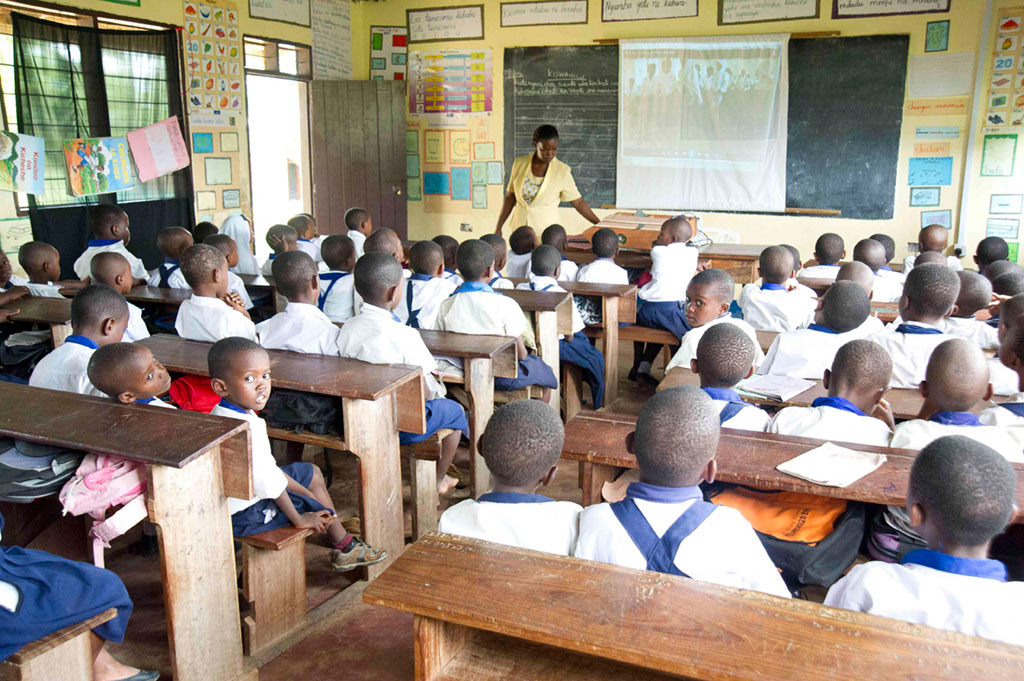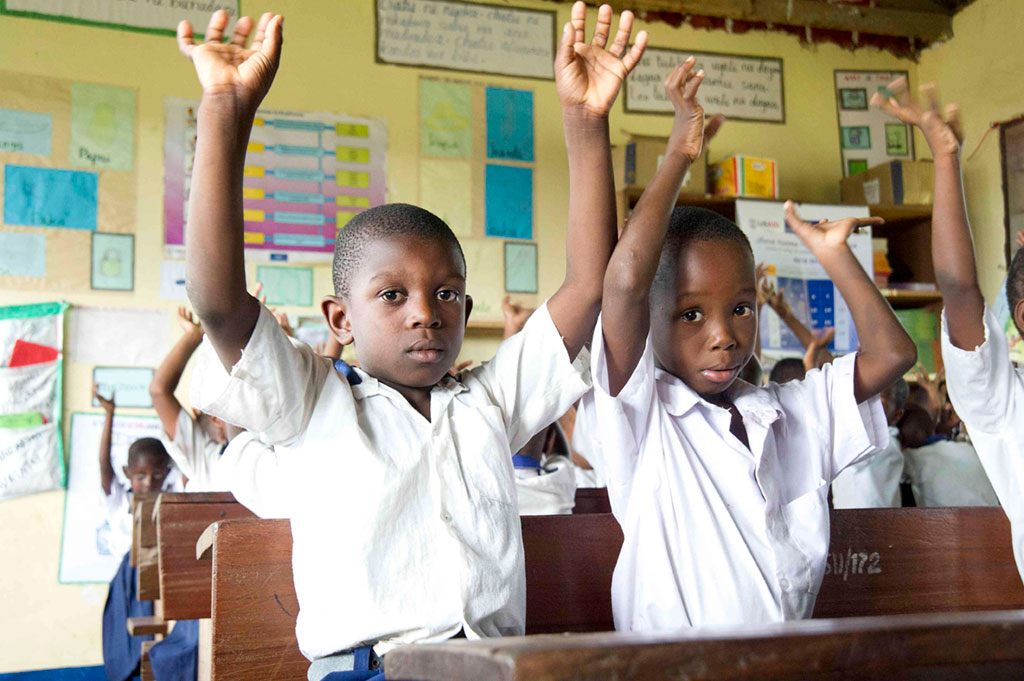Zanzibar, Tanzania—In a wired world filled with phonics apps and online courses, students can access a library of learning tools and content with the swipe of a finger or click of a mouse. For students in Tanzania, unfortunately, the 21st century did not necessarily bring with it a wave of technology.
In a 2007 report on information and communications technology in education, Tanzania’s Ministry of Education acknowledged that “very few schools have computers or Internet access, and most schools also lack electricity.” The digital learning revolution had not yet reached thousands of Tanzanian students.
“It’s very important for us to recognize that Africa cannot and should not be left behind from what is happening globally,” says Renuka Pillay, who leads Creative Associate International’s Tanzania 21st Century Basic Education Program, which aimed to get technology into Tanzanian schools and classrooms, many of which had never had access to it before.
Pillay’s program is working to change the situation. By bringing technology into schools, the Tanzania 21st Century Basic Education Program gives schools and teachers the tools to function more efficiently, better engage communities in supporting students and reading initiatives and track data on student performance through a newly established information management system that could inform national efforts to boost the country’s unimpressive literacy scores. It is funded by the U.S. Agency for International Development.

Learning to teach with technology
Working across 900 primary schools in the Mtwara region and Zanzibar, the Tanzania 21st Century Basic Education Program has encountered some inevitable challenges while incorporating information and communication technology into classrooms for the first time, but it has also generated some creative innovations to boost student achievement.
“Bridge IT” schools, for example, have a laptop and projector for teachers to use e-content and educational videos during lessons. Other schools have full mobile labs—a suite of laptops for hands-on use by three students per computer during lessons.
The program began in 2011 as a technology program—aimed specifically at bringing these teachers and students into the 21st century. It was later retrofitted to focus on early grade science, math and reading, and the technology piece has stayed. After all, it was already proving to be an invaluable tool for improving literacy.
For some, the link between computers in the classroom and early grade reading is not obvious. But Dr. Edward Kavishe, the director of Kicheko Ltd, an information and communications technology company, remembers things he learned in first grade that were taught in a visual or tactile way.
“If there’s something graphical it attracts them and it sticks. And that’s where technology comes in,” he says. “Because technology has a very powerful way of portraying: graphically, visually, with sound, with motion, and illustrations. And those things will stick to the kid much easier and much quicker and stay for long(er). So that’s where I see technology coming in and having a very, very big impact.”
Kicheko partnered with the program to install and troubleshoot the program’s technology components in all 900 primary schools in Mtwara and Zanzibar.
The two regions faced different challenges. In Zanzibar, the larger problem was overcrowded classrooms: according to Kavishe, the average class has 70 students, and it’s typical to find rooms with 100, even 120 pupils. In Mtwara, underdevelopment and poor infrastructure meant electricity was an issue.
“The ICT component for this project was very significant and very daunting,” says the program’s deputy chief of party in Mtwara, Felix Mbogella.
In both areas, teachers had very little exposure to technology.
“Some of the teachers were not used to this new technology,” says Charles Nonga, Mbogella’s counterpart in Zanzibar. “Some were scared how they could adapt the new machines—especially the computers in the schools.”
Wired for success in reading
The program trained teachers on how to use the technology, and how to incorporate it into their lessons to help students learn to read better and faster. It provided digital literacy training and showed them how to use the computers, projectors and e-content that had been developed in collaboration with the Ministry of Education.
Once all the work of learning to use the information and communications technology was over, teachers across the board found that using technology in the classroom made teaching much less work for them.
Children were engaged, and attentive. They seemed eager to participate in lessons driven by e-content.
With computers in the classroom, teachers can use videos and incorporate phonics and reading activities like games, skits and songs.
“It is a methodology of ensuring that both the child and the teacher are fully engaged during the sessions,” says Pillay.
Teachers like Mektidis Nguli, who teaches first grade at Mangowela Primary School in Mtwara, say having the technology in the classroom makes it easier to inspire kids. It has even kept more of them in class.
“E-content and videos have indeed helped reduce absenteeism,” Nguli says. “Back in the day it was normal to have more than 10 kids a day missing classes. But now that’s very, very uncommon.”
Mercy Elisha, the head teacher at Mangowela, says the 43 computers her school received through the Tanzania 21st Century Basic Education Program have changed the whole environment.
“Parents are very happy and very engaged now, because some of their kids are learning through computers, and this is a rare opportunity in the African context,” she says.
“Many parents around this area wants to shift their kids from whichever school they were in to come here, just because kids are speaking about learning through games and videos and through computers,” Elisha says. “But not only that. Experience shows that our kids are learning faster than those at other schools.”
Elisha says having the technology has even reduced the number of primary school dropouts.
When school is that much fun and learning is a daily victory, children are motivated to come to class, participate and return. For many Tanzanian children, it’s a whole new universe.
It seems that way to Elisha, too. From the tidy courtyard of her rural school, she announces: “We are now in the digital world.”

